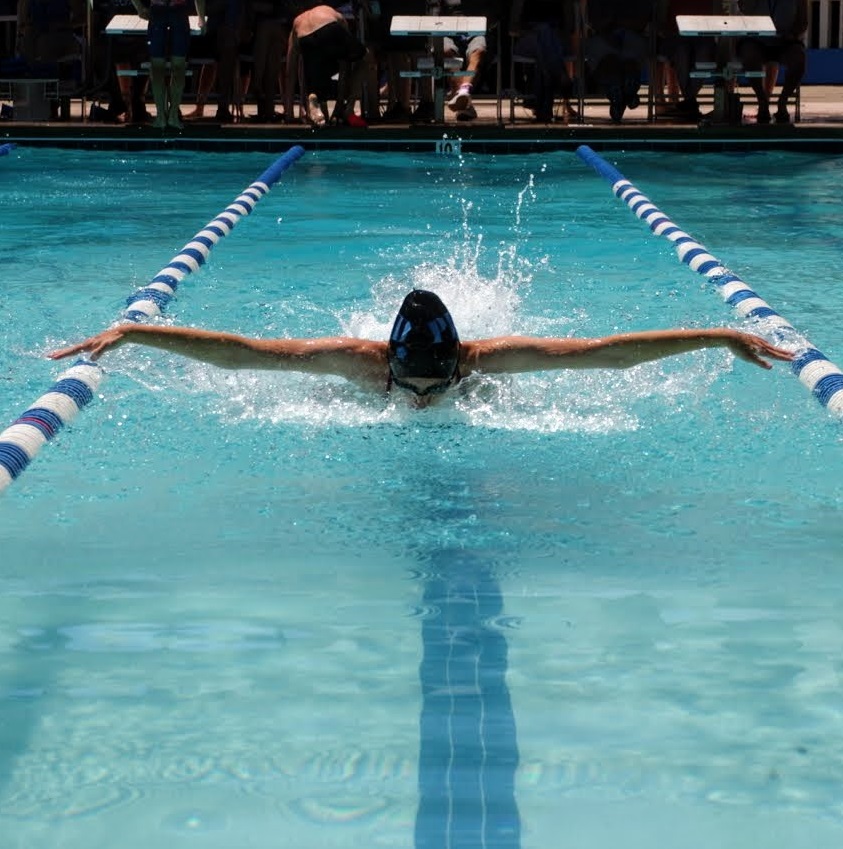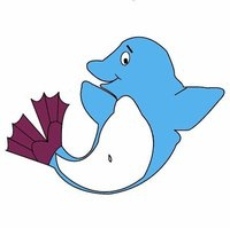MEETS
Swim meets are the opportunity for a swimmer's time to be made official and compared to both the swimmer's own personal record and Dolfins Goal Times. Meets are a lot of fun, but because there are so many moving parts it can seem like organized chaos. This page provides information about the types of meets, how to enter, parent responsibilities, what to bring, and what to expect at a typical meet.
2025 MEETS
Invitationals
- Time Trials – May 18
- Martinez 8 & Under - June 1
- Pentathlon - June 21/22
- Battle of the Ages – June 28/29
- County Meet (Qualifying) – August 2/3
Regular Dual/Tri
- Larkey – May 28
- LMYA - May 31
- Oakhurst - June 4
- PHA - June 7
- FPST - June 14
- WCSC - June 18
- Hercules - July 2
- Aquaknights - July 9
- Rancho Colorados - July 12
- Benicia - July 16
- Martinez - July 19
- Concord City Meet – July 25/26/27
Legend: Home; Away
Regular Dual/Tri vs Invitational
See the listing at right (or below on mobile phones) for the 2025 meet schedule. Regular Dual/Tri meets are scheduled directly between the competing teams who may or may not belong to the same league. Invitationals are sponsored by a host team and often many teams in different leagues are invited to participate. Invitationals may be thematic (like the Devil Mountain Pentathalon), be open to only certain age groups (like the Pleasant Hill Aquatics 9 & Under), or offer non-standard-length events (like our own Battle of the Ages).
Invitational meets require entry fees for each swimmer from our team. The Dolfins Parent Club pays these entry fees. There are no changes or additions permitted for these special meets, so when a swimmer fails to show, all entries are forfeited, team points are lost and scratched relays leave three members of that relay disappointed. If you commit your swimmer(s) to attend an invitational and they do not swim, you must reimburse the Dolfins Parent Club the meet entry fees paid on behalf of your swimmer(s). Your swimmer(s) will not be entered in subsequent swim meets until the fees are paid.
Meet Locations
Dolfins Home meets, including Time Trials, are held at the Pleasant Hill Education Center pool. Away meet locations are held at the host team’s pool. Click here for all Pool Locations.
Note: For 2025, all Dolfins Home meets are College Park High School (201 Viking Drive)
Work Assignments
Recreational swim teams are largely run through volunteer efforts. In order to run smoothly and efficiently, swim meets require an enormous number of volunteers - from lane timers to stroke-and-turn judges to announcers to desk operations to snack shack workers and everything in-between. Work shift requirements are different for Home meets, Away meets, and Invitationals. See the Work Assignments page for more information.
Meet Entries
Go the Events page and select the meet you wish your swimmer(s) to attend. Click on "Edit Commitment" and you will get a listing of each of your swimmers. To declare the commitment for each, click on the swimmer's name. That takes you to a specific page for that swimmer. If you select "Yes, please sign [(swimmer name)] up for this event", a section below will show up if any events are defined, allowing you to pick which events are available for registration.
Most dual/tri meets allow 3 events per swimmer, not including relays. For dual/tri meets, coaches will approve the events. NOTE: Coaches may change your selected event in order to ensure well-rounded swimmers and accommodate limits on the number of team swimmers per event. For invitationals, you must select your swimmer's events - the coaches do not modify. Invitational events are determined by the hosting team. If you have any questions about what events to sign up for at an invitational, please e-mail your age group coach.
MISSING MEETS OR PRACTICE FOR ILLNESS We realize that family plans or illness may result in your absence. If you become ill on the day of the meet, please call the age group coach and let them know you are unable to swim. If you will be absent for more than 2 practices in a row inform your age group coach or the head coach through e-mail. Deck communication can be easily lost and forgotten in the heat of the day.
Order of Events
Swim meets are organized around 5 individual events and 2 relay events. Generally, swimmers compete at meets in age group order from youngest to oldest: 6 & under, 7/8, 9/10, 11/12, 13/14, 15/18. The normal order of events (along with the common abbreviation for each event) is as follows: MR, IM, Free, Breast, Back, Fly, FR.

- Medley Relay (MR): Four individual swimmers combine as a team, with each swimmer swimming one of the following strokes: Back, Breast, Fly, and Free. The 6 & under and 7/8 age groups swim a 100 yard MR (25 yards per swimmer). All other age groups swim a 200 yard MR (50 yards per swimmer).
- Individual Medley (IM): Individual swimmers swim 25 yards each of Fly, Back, Breast, and Free (in that order) in one event. All IM races are 100 yards. Ages 6 & under do not swim this event.
- Individual strokes: The 6 & under and 7/8 age groups swim 25 yard races. The 9/10, 11/12, and 13/14 age groups swim 50 yard races. The 15/18 age group swims 100 yard races.
- Freestyle (Free)
- Breaststroke (Breast)
- Backstroke (Back)
- Butterfly (Fly)
- Freestyle Relay (FR): Four individual swimmers combine as a team, with each swimmer swimming Freestyle. 6 & under and 7/8 age groups swim 100 yard FR (25 yards per swimmer). All other age groups swim 200 yard FR (50 yards per swimmer).
Meets generally begin with the 6 & under Medley Relay, with the girls swimming first, followed by the boys of the same age group. The meet then proceeds through each older age group for an entire event (i.e., 7/8 girls follows the 6 & under boys). All swimmers need to pay attention to the order of events at a given meet and be ready to report to swim at the required time. The order of the meet depends upon the team hosting it.
What to Bring
- Team suit
- Team cap (plus a spare)
- Goggles (plus a spare)
- Sunscreen
- Towels (typically one towel per event, especially at evening meets)
- Warm clothing (After warm-ups and between each event wear clothing, including shoes to keep warm. This includes t-shirts, sweats, slippers, etc.) Keep warm with layers that are dry, and bring a beanie/fleece cap for your head. About 80% of all body heat is lost through the feet, hands, and head.
- Sleeping bag
- Books, games, cards, etc.
- Sunglasses, hats, and visors
- Snacks and drinks (or money for snacks and drinks)
What to Do
- Wear your team suit and team cap (team cap is REQUIRED)
- Be on time for warm-ups: Swimmers should be at the meet at least 15 minutes prior to warm-ups. Missing warm-ups may result in being scratched from the first relay.
- 9 years and older: Talk to your coach before and after your events
- Never rush before your event. Leave enough time to take off sweats, etc., and to think about the event you are about to swim.
- After your event, mentally review your swim. Remember: Success is in trying.
- Give your name and age to the recorder, whether at a table or at the starting block. (Ages 8 & under do it after your swim; 9-18 years do it before your swim.)
- If you want to find out your time, ask the recorder immediately after the event. Note: The stopwatch time is not your official time.
- Inform your age group coach if you leave a meet before all the events have concluded.
- Keep your team area clean; pick up all trash before you leave the meet. Separate recycling into the proper bins.
- Always show respect to your competitors and meet officials. If you choose to challenge an official at the meet tell your coach and they will handle it accordingly.
- Remember: Whether you are 5 or 18 years old, you are a Dolfin first. Cheer for your teammates. Swim hard for yourself and your team. Champions let their swimming speak for itself.

What to Eat
By Jill Castle, MS, RD, LDN
What’s your nutrition prescription? Everybody has a different approach when it comes to eating on race day. Having a strategy and an execution plan can remove doubt and worry about hunger, energy levels, digestive problems, and keep you focused on the race at hand. Here are a few guidelines for smart eating and packing up the cooler:
- Don’t DQ your day. Breakfast at home or on the road is the metabolism boost every swimmer needs. Instant oatmeal made with skim or low fat milk, toast with nut butter, dry cereal, yogurt and fruit are all light options that rev up the body. If you are competing in the morning, be sure to keep it light. Opt for a heavier breakfast if competition is in the afternoon.
- Pack variety. A few options of fruit, vegetables, grain and high quality protein sources should cover the variable appetite and tummy tolerance you may experience on race day. It’s better to have more food options than a large quantity of only two or three foods. Don’t make the mistake of relying on a single food or energy bars to get you through the day. While they can do the job of fueling your body, they may not rate in appetite satisfaction. Having a variety of food sources increases the odds of proper fueling and healthy eating.
- Pack enough. You don’t want to run out of food, and you may want to share with other swimmers (well-fueled swimmers help the whole team, right?).
- Pay attention to temperature. If you are packing perishables, be sure to add an ice pack. It’s no fun to get tummy cramps before a race because something has spoiled.
- Pack in the protein. Protein will be an ally in keeping your blood sugar stable, thus keeping hunger, energy and mood in check. Nibble on cheese sticks or slices, nuts, peanut or nut butters, deli meat slices, yogurt or yogurt drinks, boxes of low fat milk, hummus, hard-boiled eggs or edamame.
- Don’t forget the Carbohydrate. Your muscles rely on carbs for fuel. Pack easily digestible sources such as 100% juice, fruit leather, applesauce, fresh or dried fruit, or veggie sticks. Don’t forget the more complex carbohydrate foods too, such as crackers, unsweetened dry cereal, pita or other breads, pretzels and graham crackers. Stay away from refined sugars such as soda, candy and desserts on race day.
- Nosh or Nibble? Save “meals” or large quantities of food for big breaks between events. Nibble small amounts of food before and after events that are closely scheduled. At a minimum, you should be nibbling to stay energized and keep your muscles fueled on race day.
- Think your drink. Water, 100% fruit juice and sports drinks are appropriate at a swim meet. Plain and flavored milk are great recovery drink choices after the meet; they provide protein for muscle repair and carbohydrate to refuel muscles.
- Know your eating style on race day. If it is counter-productive to racing, follow these guidelines as a strategy for optimal eating. Don’t tempt yourself by packing foods or making concession purchases that you (really) don’t want to be eating.
- Fiber Facts. Fiber can be a problem on race day, or not. Fiber is a food component to which each swimmer has an individual tolerance. Don’t experiment with high fiber foods on race day; sort this out during training season and avoid tummy trouble when it matters most.

